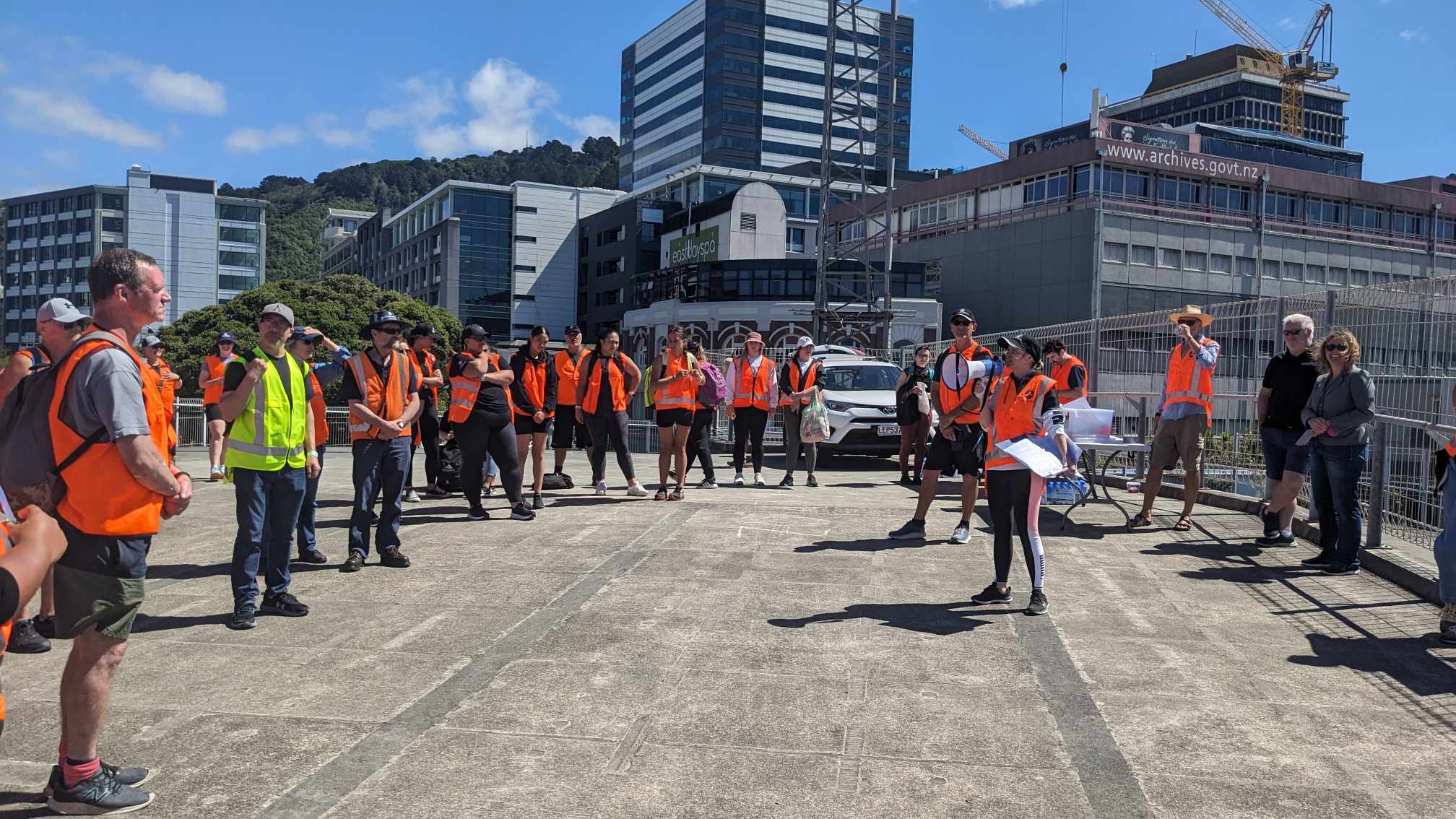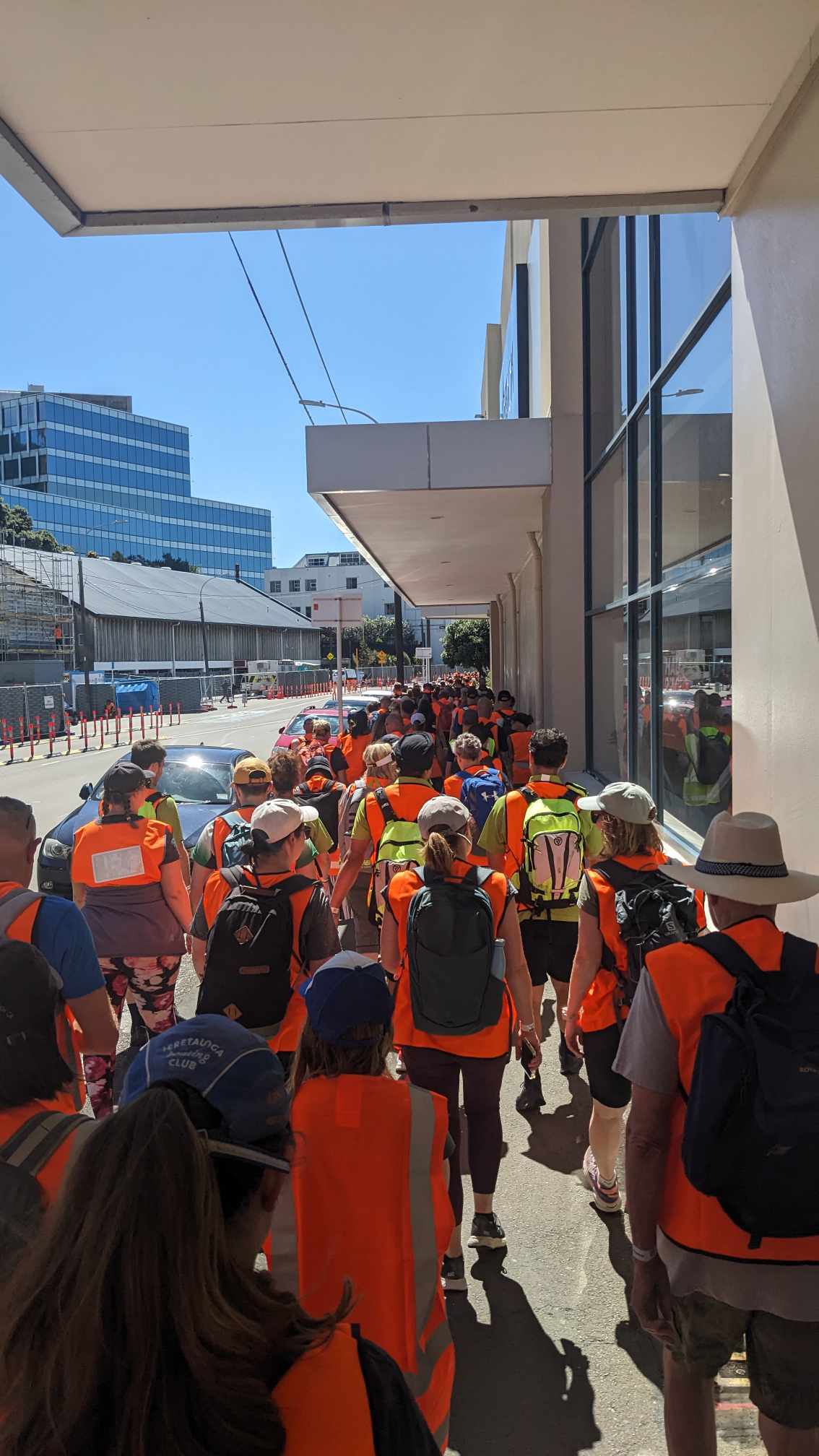Walking the talk – are you prepared for a long walk home in an emergency?
12 Mar 2024, 1:28 PM
One of our staff, Sarah, took part in the Long Walk Home - a long-distance challenge walk from Wellington City to Mana, Porirua (30 kilometres), organised by Wellington Region Emergency Management Office (WREMO) to raise awareness and help increase emergency preparedness in the Wellington region.
Almost a third (27 percent*) of our Kāpiti residents commute outside the district to work, including Wellington, Lower Hutt and Porirua. After a large earthquake, road and rail links out of the city could be cut off for a week or longer. If this happens, would you be prepared to walk home?
Here's Sarah's account of this important event, and her key takeaways on being as prepared as you can be.

Walking the walk
When a moderate earthquake, centred in Seddon, hit in 2013, both my husband and I worked in Wellington.
It was a workday, and thousands of workers spilled onto the streets as buildings were evacuated. The roads were crammed with people trying to get home. We had a moped, and the roads weren’t damaged, so we were lucky enough to be able to weave through the traffic to get home quickly.
Many others, most notably anyone who took the train that day, weren’t so fortunate, as it took around six hours for rail services to resume. In the event of a large earthquake, road and rail links could be cut off for a week or longer.
So when I heard WREMO were organising the Long Walk Home, a long-distance challenge walk from Wellington City to Mana, Porirua (a distance of 30 kilometres), I wanted to try it out.
I’m a fairly fit person, but it’s been a while since I’ve walked that sort of distance, especially in one day (for some context, the Tongariro Alpine crossing is 19.4 kilometres).
My husband and I ended the challenge at Porirua Station as that was where our car was parked. Even with only a light backpack, I still found it challenging. It took us just under four hours to get there from Sky Stadium, walking at a decent pace, and I was feeling it. My house is another 1–2 hours from there because the route isn’t very direct.
My key takeaways are:
- A hat, sunscreen, water, snacks, good walking shoes, first aid kit, and wet weather gear are essential things to have ready in your work grab bag. When we did the walk it was hot, unshaded, and windy walking up Ngauranga Gorge.
- Even if your walk home isn’t very far, roads could be closed, walkways washed away, bridges damaged. Make sure you know your route and are prepared to walk it if necessary.
- Many whānau members work in different areas around Wellington. Make sure you have an agreed plan and meeting place, or a place you will stay if you can’t get home.
- There may be people less able than you who'll need help to get home, including people who are injured.
- Even if main roads are undamaged and can be walked along, emergency services will take priority.
My advice to you is to be as prepared as you can be – get that grab bag together, make a plan, and know you've done all you can.

Since Kāpiti has a higher number of self-employed workers (28 percent*) compared to national levels (16 percent*), it's just as important to be home ready and community ready in a major emergency. It could take up to seven days for help to arrive, so being prepared is essential.
Check out the related links below and the WREMO website for more tips on how to be home ready, work ready, and community ready in a major emergency.
* Data from Census 2018.